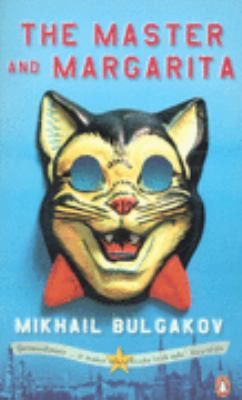The Master and Margarita by Mikhail Bulgakov
The Master and Margarita is a Russian novel that was first published in its entirety in 1973, more than 30 years after its author, Mikhail Bulgakov, had died. The copy available at the CGD Library has been translated by Diana Burgin and Katherine O'Connor.
The basic plot involves the Devil and some of his companions/servants arriving in Moscow (the year is never specified, but it is generally believed to be set in the 1920s or 1930s), where they begin to cause mayhem and mischief. There is a secondary plot involving Pontius Pilate and the execution of Yeshua (Jesus) in Roman-controlled Jerusalem. However, this subplot is quite minor and only spans a handful of chapters.
One thing I should mention is that if you are expecting the main characters to band together to defeat the forces of evil, you will be very disappointed. The Master and Margarita is ultimately a very funny novel driven by the Devil and his minions tormenting and playing pranks on various citizens of Moscow, with their preferred targets seeming to be those involved in the literary scene, as well as patrons and staff of the Variety Theatre. The main plot, led by the Devil, is a blend of humour, magical realism, a touch of horror, and revenge fantasy. This is contrasted with the more serious Pontius Pilate subplot.
There are a couple of things to be aware of before you start reading. Firstly, having at least a basic knowledge of Soviet history will help you better understand some character motivations and reactions. While not strictly necessary, it does add helpful context to the situations they face. Secondly, as is common in Russian literature, the book features many characters, most of whom are referred to by multiple names. Unfortunately, unlike some Russian novels, this edition does not include a list of characters and their various names for reference. You’ll need to either commit them to memory as you go or take notes to avoid confusion.
It’s also worth noting that the characters the book is named after do not appear until relatively late in the story. The Master first appears in Chapter 13, and Margarita in Chapter 19. Even after their introduction, the narrative continues to shift between various characters’ points of view.
One thing the novel does particularly well is depict how realistically some characters react to the bizarre situations they encounter. Many try desperately to come up with rational explanations for clearly irrational events. A great example is when two characters receive a telegram from a colleague in Yalta. After trying to work out how he could have possibly travelled there so quickly, they conclude it’s physically impossible and decide he must instead be drunk at a local pub with the same name.
I recommend this book for readers aged 16 and older, as it does contain some adult content. However, overall, it is a very enjoyable and entertaining read.
Find The Master and Margarita by Mikhail Bulgakov
Matthew O


